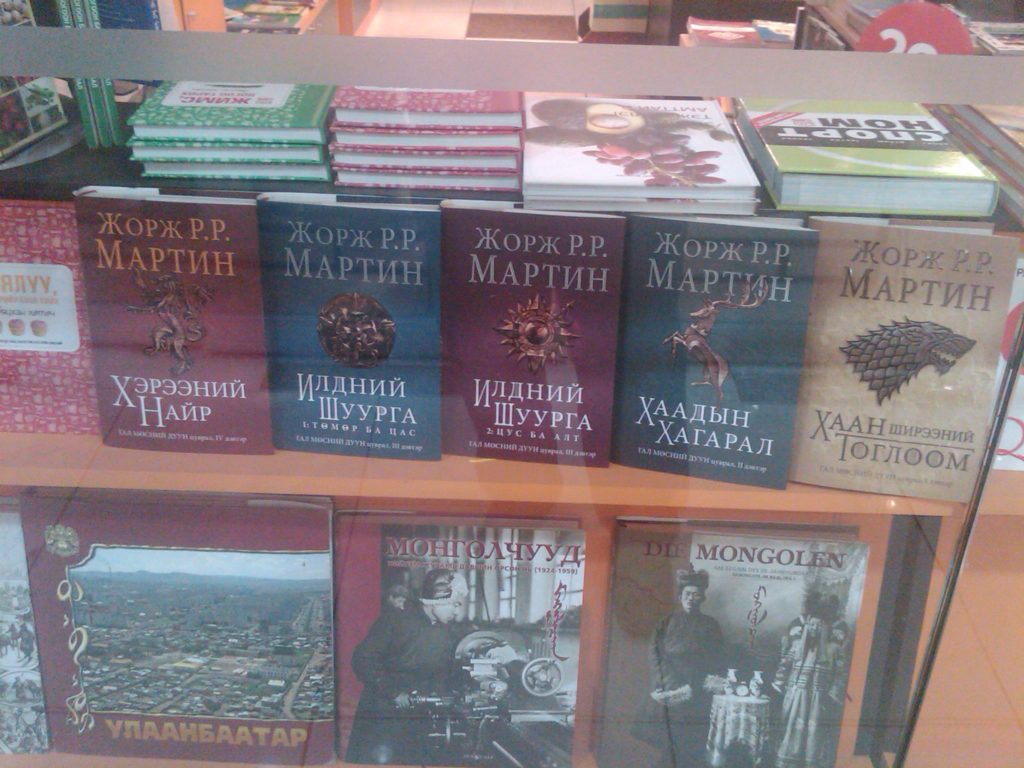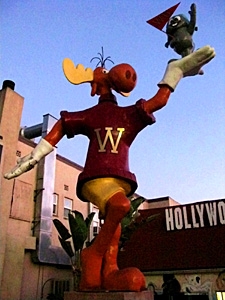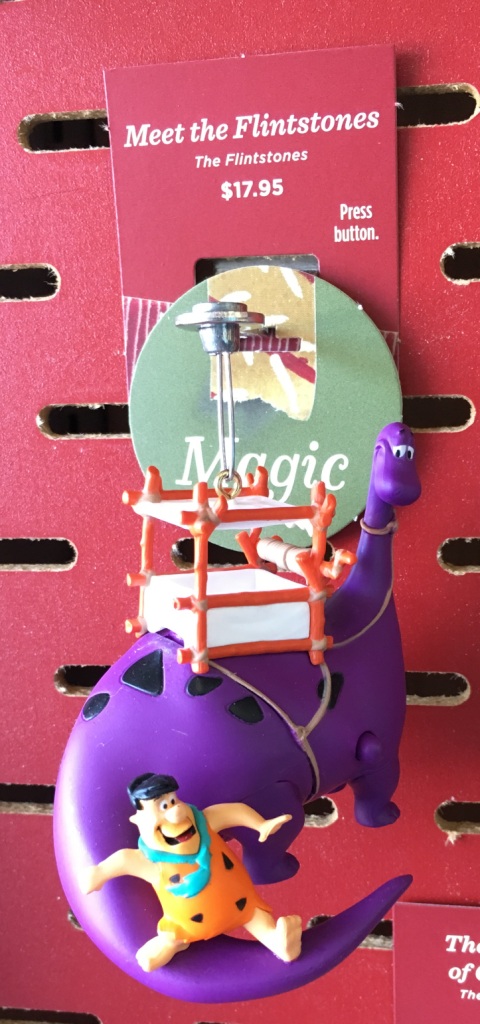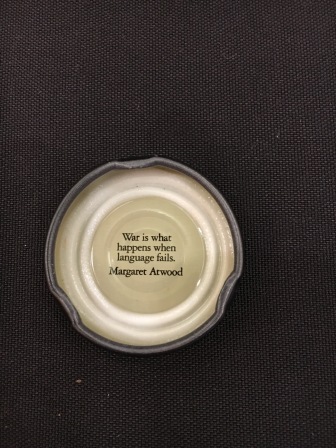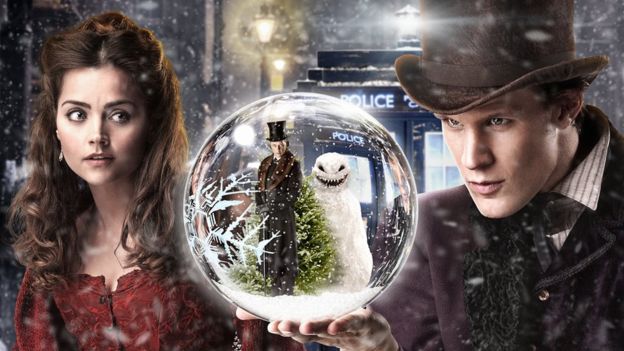(1) FUTURE TENSE. The December 2023 entry in the Future Tense Fiction series is “Rigland,” by Suyi Davies Okungbowa. The story is about oil rigs and what we owe to our communities.
It was published along with a response essay by journalist Mia Armstrong-López: “What if Oil Platforms Belonged to the People Who Worked on Them?”.
…When I set out to report on Mexican women working offshore, I expected to focus on harassment, discrimination, and abuse and the grueling labor conditions that facilitate them. Women are in the minority on platforms—one interviewee was the only woman among dozens of men; others recounted being in groups of only five or 10 women on an entire platform, outnumbered 1 to 10 or 20. The conditions they face are often punishing: In Mexico, platforms are isolated with limited communication, living situations are dorm-style and sometimes coed, and many workers have short-term contracts with little protection. The work is dangerous—they’re exposed to heavy machinery, harsh weather, and hazardous chemicals.
I heard plenty of stories of these precarious conditions—women who were spied on while they showered or changed, discriminated against due to pregnancy, and verbally abused. But more often, women shared experiences like the fishing story. They wanted to tell me about spending hours carving tomatoes to look like flowers to make a meal feel more special; about coordinating workers to bring their favorite candies to stuff holiday piñatas so they would all feel less alone; about learning to teach yoga, helping their colleagues relieve the years of work-related pain and exhaustion their bodies had come to carry. They told me these stories not to excuse or brush over the other, darker realities of working offshore but to show me, Look what we’ve built, despite it all….
(2) ANOTHER DAY IN COURT. Michele Lundgren, charged as a Michigan fake Trump elector in July, was back in court on December 13 along with five other defendants to hear testimony before a judge who will eventually rule whether the Michigan Attorney General’s office has established probable cause for the felony charges to proceed to trial. “Michigan elections director says he contacted AG on false electors” in the Detroit News. Michele Lundgren is the wife of Carl Lundgren, a well-known sff artist.
Michigan elections director Jonathan Brater testified in court Wednesday that he contacted the Attorney General’s office after finding out about a certificate state Republicans signed falsely claiming Donald Trump won the 2020 presidential election.
Brater’s revelation highlighted the first day of preliminary examinations in the criminal cases of six of the 16 Republicans whose names appeared on the certificate, which was part of an attempt to flip Michigan’s 16 electoral votes to Trump although Democrat Joe Biden won Michigan in November 2020.
Over about seven hours of testimony in Ingham County District Court, prosecutors from Attorney General Dana Nessel’s office and defense lawyers repeatedly clashed over what the importance of the false certificate was, Michigan election law and even who could be in the courtroom.
The examinations will continue Thursday with Ingham County District Court Judge Kristen Simmons eventually having to decide whether the Attorney General’s office has established probable cause for the eight felony charges it’s brought against each of the Republicans to proceed to trial….
(3) KEEP A HANKY READY. Camestros Felapton’s “Smith Rewatch: Vincent and the Doctor”. Maybe cue Judy Garland singing, “You made me love you / I didn’t want to do it….”
…Let’s make it potentially worse by adding in a writer against which Moffat’s attraction to twee Britishisms and romcoms looks positively restrained. Richard Curtis getting to write floppy haired Matt Smith as a surrogate Hugh Grant sounds like a recipe for disaster.
And yet, this is one of the most beloved episodes of Doctor Who — perhaps more with its general normy audience rather than die-hard Who fans but still one that is often pointed at. I think I went into this episode feeling cynical, I’ll concede the ending touched me but it felt messy to me at the time. On rewatch? I’ll confess that I started tearing up much earlier than the plot demanded. It is very sentimental but a good rule for Who is to always go a little bit extra with whatever direction the story is heading….
(4) THE NEW DOCTOR. [Item by Steven French.] In the run up to the Xmas special, Ncuti Gatwa on Xmas, family and Dr Who: “Ncuti Gatwa: ‘I know many a gay man who’s exactly like the Doctor’” in the Guardian.
“We choose our families. And the Doctor is a lonely wanderer, looking for their next adventure … I know many a gay man, MANY a gay man, I could describe that way!” He laughs. “I think that’s a beautiful, beautiful theme Doctor Who has, because chosen family can be more meaningful, more supportive. That really can be the case, and it’s a theme that absolutely runs through the show.”
(5) ORIGIN OF THE SPECIES. “Can the Oompa-Loompas Be Saved?” The New York Times seriously doubts it, if the answer depends on finding a way to make them politically correct.
What do we do with the Oompa-Loompas?
That’s a question filmmakers and writers have tangled with ever since the 1964 debut of the tiny, largely unpaid laborers in Roald Dahl’s beloved children’s book “Charlie and the Chocolate Factory.”
In Dahl’s original, the Oompa-Loompas were starving African pygmies, subsisting largely on a mash of green caterpillars and tree bark until “rescued” by Willy Wonka. He smuggled the entire tribe out of Africa in packing crates to live and work, and sing and goof and dance, in the chocolatier’s plantation, er, factory.
“It didn’t occur to me that my depiction of the Oompa-Loompas was racist,” Dahl said in a 1988 interview. “But it did occur to the N.A.A.C.P. and others.”
In the five decades since their literary debut, the Oompa-Loompas have undergone a series of transformations to shake their story from its colonialist roots. Some fixes have been transparently cosmetic (in subsequent editions of the book, illustrators simply made the tribesmen white). Others weren’t fixes at all: In the 2005 film “Charlie and the Chocolate Factory,” the director, Tim Burton, just shifted continents, moving the Oompa-Loompas out of Africa to someplace that vaguely resembles South America, as imagined by an adventure film director from the 1950s.
In the Warner Bros. prequel “Wonka,” which opens Dec. 15, the filmmakers address the colonialist aspects head on…
(6) WESTERCON. [Item by Kevin Standlee.] The official papers of Westercon as of the end of Westercon 75 (Loscon 49) have been updated and are available at Bylaws & Business – Westercon
This document includes:
- Minutes of the Westercon 75 Business Meeting
- Links to video of the Business Meeting and the Committee of the Whole on Site Selection held thereat
- Bylaws and Standing Rules as of the end of Westercon 75 and the Draft Agenda for the Westercon 76 Business Meeting.
(7) TODAY’S BIRTHDAY.
[Written by Cat Eldridge.]
Born December 22, 1951 — Charles de Lint, 72. Need I say this is just my personal choices by an author I’ve known personally for over thirty years now? I think not.
Let’s start with Moonheart, the novel that Tamson House at its heart, a most amazing architectural wonder which may be at center of the universe. It amazes me with every page. I know that’s why readers I’ve talked to pick it as their favorite of his considerable writings. The sequel, Spiritwalk, is a patch-up novel and in someways a deeper, more interesting story, mainly because the characters are more flawed.
Moonheart is set in home city of Ottawa as are these three novels. Yarrow is an autumnal tale of a woman who has stopped dreaming, and the two Jack of Kinrowan novels, Jack, the Giant-Killer and Drink Down the Moon, involve the fey courts in Ottawa. If you like War for the Oaks, I think that you will like these novels.
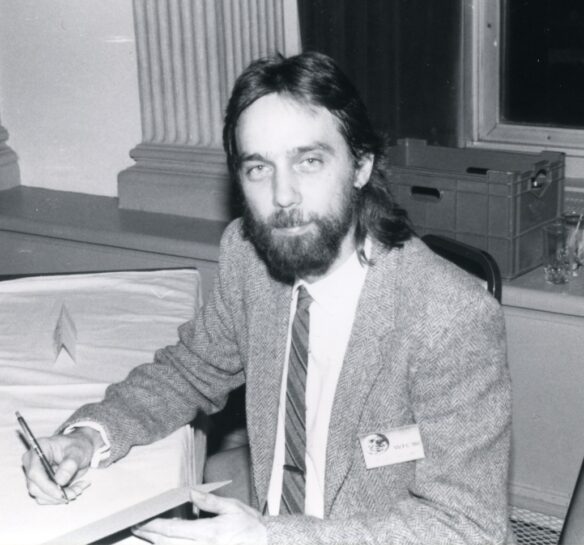
Memory and Dream is his take on artists and their work with the usual magic thrown in. Lots of pre-Raphaelite influence here, I think if I remember correctly that he has an artist named Ruskin. Very interesting.
Someplace to Be Flying is the first of two novels set in his city of Newford that I deeply, madly love. This one introduces the Crow Girls, immortal shape shifters who just want to have fun and eat sugar. Really they do. It’s got great characters, wonderful settings and a fantastic story as does Forests of The Heart which adds a large dollop of Irish music and the green man to boot to the Newford setting.
The Mystery of Grace which was his last novel for Tor for reasons that were interesting to say the least is a fantastic story of a motorcycle riding female mechanic who may have crossed over to the other side when the veils on Día de los Muertos grew too thin in the right, or if you prefer, wrong place. Stellar writing by him.
The Cats of Tanglewood Forest as infused with lavish illustrations by his friend Charles Vess should be read by anyone who loves cats, Appalachian folklore or just a great story. Need I say the book itself is stunningly gorgeous? Lillian here was the girl in A Circle of Cats, the children book done by him and again illustrated by Vess. Again recommended. Medicine Road will feature a grown up Lillian.
His newest undertaking, in which Junniper Wiles is the central character, is a mystery series and a lot of fun. More light heated than some of his fiction has been, not a bad tack to take.
So how are his short stories you say? Extraordinarily good. For over a decade before he stopped publishing them, he sent me his annual Winter chapbook on Triskell Press, a perfect treat from him.
If I was going to recommend but one collection to read by him, it would be an easy pick and that would be Dreams Underfoot. It has “The Moon is Drownimg While I Sleep”, maybe his best story ever, and other excellent stories such as “The Sacred Fire” which was produced as an episode of the The Hunger anthology television series hosted first by Terrence Stamp and then by David Bowie and was first shown I some twenty-five years ago.
He did a later collection as well on his new publisher, Tachyon Press, The Best of Charles de Lint. I’ll admit I’ve not looked at its content so let me do that now. Huh, it’s up but Tachyon Press didn’t do an epub edition so he did it himself. I will recommend it as the stories in The Very Best of Charles de Lint are those of Dreams Underfoot plus a whole more of his later work.
(8) COMICS SECTION.
- Carpe Diem continues its Star Wars and pets imitating their owners theme.
- Eek! has the worst gift.
- Eek! also has a silly demonstration of a bit of monster trivia many get wrong.
(9) TO DYE FOR. The Guardian pages back to the 19th century to explain “How a European colour revolution brought us the humble Christmas card”.
What would Christmas be without the humble Christmas card? It’s hard to think of a more quintessentially British seasonal tradition than propping up colourful bits of stiff paper on your mantelpiece, but in fact we wouldn’t be sending each other bits of stiff paper were it not for a feat of pan-European collaboration – and competition – cooked up in the mid-19th century. Many of our most familiar traditions percolated down from Britain’s royal and aristocratic families, who themselves had imported many of them from their German forebears. But it wasn’t until the widespread adoption of colour printing in the 1860s that Christmas cards, first commissioned as high-status, handcrafted items in the 1840s, became cheap enough for the middle and lower classes to get their hands on them.
Some of these early mass-produced cards are on show at the Ashmolean in Oxford, as part of their Colour Revolution exhibition. To the modern eye they are pretty elaborate affairs, dating from the 1880s, with beautifully coloured floral images, silk tassels and fringes, dyed vibrant shades of purple and orange. The cards may be small but they are part of an important story, one that the exhibition aims to tell in a detailed way. It concerns the almost incalculably formative influence of the mid-19th century “chromatic turn”, in which the Victorians’ obsession with admiring, analysing and then manufacturing colour in all sorts of areas – fashion, art, design, advertising – made itself felt across Britain, France and Germany, and indeed the rest of the world.
The Ashmolean exhibition is a brilliant and fascinating show, re-creating elements of the 1862 International Exhibition in London’s South Kensington, which showcased 19th-century attempts to reconstruct the original colours of ancient Greek sculpture (including Alma-Tadema’s fabulous painting Phidias Showing the Frieze of the Parthenon to his Friends), and some elaborate late-Victorian fashions, including a gruesome necklace made from dead hummingbirds.
The show’s key element may appear slightly dusty by comparison: a section outlining the development of synthetic aniline dyes, starting in 1856 with the invention of the strident purple known as “mauveine” by young British chemist William Henry Perkin, while studying under German professor August Wilhelm von Hofmann. Discovered accidentally as Perkin was trying to produce a malaria treatment from coal tar, mauveine – and its subsequent counterparts such as fuchsine (reddish-purple), and induline (bluish red) – were cheap to produce and had enormous commercial success as, for the first time, brightly coloured fabric became affordable for large swathes of the European lower and middle classes, allowing them to indulge in fancy dresses, hats, upholstery and, yes, Christmas card tassels….
(10) SECOND TO NONE. What is the exact time? Tom Vanderbilt learned why it’s hard to tell: “In Search of Lost Time” at Harper’s.
…The night before my visit, I’d opened time.gov, the very official-looking page—headlined official u.s. time—run by NIST and the U.S. Naval Observatory. The site features a map of the United States, divided into time zones, as well as a variety of subsidiary clock displays (Chamorro Standard Time, Aleutian Standard Time) that ticked, at the second level, in seeming synchrony. I noticed that my own watch—the Garmin Forerunner 935, a “premium running watch,” which generally gets its time from four of the thirty-one operational GPS satellites encircling the globe—looked to be a second behind. Why?
This was one of the first questions I put to Judah Levine, an eighty-two-year-old JILA physicist and one of “America’s timekeepers.” “The handheld guys are typically wrong by a second or a half-second,” Levine said. “That’s because the device’s display is not fast enough.” He said this with weary resignation. White-haired, with gold-rimmed glasses, wearing a blue flannel shirt, gray work pants, and sturdy black shoes, Levine reminded me of one of those somewhat cantankerous master craftsmen you still find in certain old quarters of Brooklyn. The shelves of his office were lined with physics textbooks, and an Oregon Scientific clock—which gets a radio signal from NIST—displayed the time in blocky liquid-crystal numbers.
In fairness to my watch, Levine explained that time.gov (which had informed me that the laptop I was using had strayed “+0.012 s”) was itself off by a noticeable amount. “It takes a while for the signal to transfer across the network, which we don’t control,” he explained. The actual correct time was on display in a laboratory adjacent to Levine’s office. It appeared as a string of red digits on a device that looked like a high-end stereo amplifier. This was a display of the official time, which is kept by a series of cesium fountain atomic clocks a few miles away, at NIST’s Boulder campus, and sent via satellite to JILA. Here was the seat of temporal power, the nation’s pulsing metronome. I watched the red LED seconds tick away, bathing in their implacable authority. It was then, however, that Levine introduced another complication. The time we were looking at might actually, a month from now, be deemed incorrect….
(11) THE DOORS, NOT THE DALEKS, WERE THE REAL NIGHTMARE. “Doctor Who: TV crew member recalls genesis of the Daleks” at BBC.com.
On 21 December 1963, some of the most feared characters in science fiction first appeared on screen.
The first episode of Doctor Who in which the dreaded Daleks appeared – The Dead Planet – was broadcast on BBC television.
While the rest of the country watched from behind their sofas, Sue Webb, from Winchester, was working as a producer’s assistant at the BBC’s Lime Grove studios in Shepherd’s Bush, west London.
Sixty years on, she has been recalling the recording of this landmark moment in TV sci-fi.
Ms Webb admits to being initially unimpressed about working on the BBC’s new science fiction drama for Saturday teatimes, based on an eccentric alien, played by William Hartnell, who time travelled in a police phone box.
“It was really just another programme and not what we were used to – we’re drama darling – we do play,” she says.
She recalls the studio being “actually a bit too small”.
“We had to fit in a petrified forest and a metal city for the Daleks,” she says, adding: “It looks like cardboard boxes covered in sheets.”
As for the metallic pepperpot-shaped aliens, created by designer Raymond Cusick, Ms Webb remembers rehearsals with actors “trolleying” around on castors in just the bottom halves of the characters that would become The Doctor’s nemesis.
She says: “Daleks were difficult creatures to move around. They got very hot and the actors were very uncomfortable inside.”
Actor David Graham, along with Peter Hawkins, spoke the Daleks’ lines in a booth off-screen. Graham later worked on Thunderbirds and Hawkins was the voice of Captain Pugwash….
…”The whole episode creaks – it just doesn’t look real at all – the actual surroundings would look terribly amateur.
“The real nightmare was the set with all those sliding doors – they were supposed to rise and sometimes they didn’t.
“You have got to rise above it and accept some things are dodgy, keep fingers crossed and hope for the best.”…
(12) LITERARY MOONS. “See the James Webb Telescope’s Stunning New Image of Uranus With Its Rings and Moons Clearer Than Ever” at Smithsonian Magazine.
…Nine of Uranus’s 27 moons can be seen surrounding the planet in the new image, shining like pearls. Individual astronomers discovered the ice giant’s five largest moons between 1787 and 1948. When Voyager 2 flew by Uranus in 1986, it discovered ten more natural satellites. Since then, the Hubble Space Telescope and ground-based observations have brought the total to what it is today.
The ice giant’s moons are sometimes referred to as the “literary moons,” because they’re named for characters in Shakespeare’s plays, along with a few from the works of Alexander Pope. Those in Webb’s close-up image, moving clockwise from 2 o’clock, are called Rosalind, Puck, Belinda, Desdemona, Cressida, Bianca, Portia, Juliet and Perdita. (A second, wide-view image shows 14 moons.)…
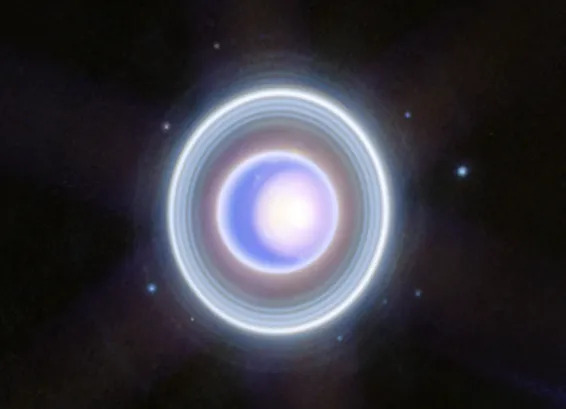
[Thanks to Chris Barkley, Cat Eldridge, SF Concatenation’s Jonathan Cowie, Steven French, Kathy Sullivan, Kevin Standlee, Mike Kennedy, Andrew Porter, and John King Tarpinian for some of these stories. Title credit belongs to File 770 contributing editor of the day Daniel Dern.]



